#the vampyre by john polidori
Explore tagged Tumblr posts
Text
So I get that a guy might be working through his complicated homosexual crush on his boss via writing a genre-defining novel in the 19th century, in which their boss becomes a vampire aristocrat that seduces and kills people all over the place. Sure. But it's weird that it happens fucking twice? Both with John Polidori's The Vampyre (1819) and Bram Stoker's Dracula (1897)?
Polidori bases off Lord Ruthaven on Lord Byron, for whom he worked as a personal physician and travel companion for a short while; all while admiring him immensely and being obsessed with him and resenting him too, for his literary talent and status in society. They had a tumultuous relationship, and the history of The Vampyre as a published story is also very interesting, but... Bram Stoker apparently also based Count Dracula off Henry Irving, a famous actor he worked for as a business manager for like 27 years? And their relationship is also described as extremely close, with Bram Stoker being a huge fan of Irving and constantly catering to his needs, to the point of people around him describing Irving as the most important person to him. And the fact both Byron and Irving were described as distant and mean-spirited to Polidori and Stoker, with the former being a lot worse than the latter. In both The Vampyre and Dracula, the suave vampire noble is, in some ways, an incarnation of the male main character's forbidden and complicated desires-- made evil because of their simultaneous emotional and societal inaccessibility, turned into supernatural leeches that must be defeated and who interestingly seek out mostly women as their victims. John Polidori's story ends with Aubrey dying and Lord Ruthaven draining his sister after having killed his lover, but Bram Stoker's novel has Jonathan kill off Count Dracula and Mina surviving after Dracula caused Lucy's death. And John Polidori ended up committing suicide, but fortunately Bram Stoker lived on. One exorcised their demons better than the other.
...I just did not expect to go on this vampire obsession spiral because of Nosferatu (2024) and end up with the new perspective of "Wow, poor Aubrey/Jonathan/Thomas, they took your gay Count away and made him mainly an expression of the female character's repressed desires." Goddamn.
#the power of gay crushes in literature is unfathomable#I didn't expect to be reading about Bram Stoker's thing for Walt Whitman and his obsession with Henry Irving at 3 AM. but alas.#rants.txt#dracula by bram stoker#the vampyre by john polidori
77 notes
·
View notes
Text

🎃 Ever wonder how Frankenstein and The Vampyre came to life? It all began during the stormy summer of 1816, a time so eerie it’s now called the "Year Without a Summer." Confined indoors by relentless rain, Mary Shelley, Lord Byron, and John Polidori challenged each other to write the scariest story they could. What followed was nothing short of legendary: Shelley’s Frankenstein—a tale of ambition, creation, and consequence—and Polidori’s The Vampyre, the first modern vampire story that still haunts us today.
These works explore themes we still grapple with—ambition, relationships, power, and the unknown. And they remind us of what the humanities do best: helping us ask the big questions about who we are and how we live together.
This Halloween, revisit these iconic stories and reflect on how literature challenges us to confront our fears—both real and imagined. Check out our latest blog post to explore the spirit of Villa Diodati and the enduring importance of these tales.
Read it now on the JSTOR blog.
#jstor#jstor blog#humanities#social sciences#literature#gothic literature#frankenstein#the vampyre#mary shelley#john polidori#lord byron#classic lit
827 notes
·
View notes
Text

See Arcane's Scribbles Substack
Do you like classic horror literature? Do you have a below-average fear of disembodied eyes staring at you from the screen while you try to read? Then have I got the Substack for you!
Mine. It’s my Substack. See Arcane’s Scribbles is where I’ll be compiling a number of preview chapters for works-in-progress as well as a few other eerie odds and ends that might not end up on Tumblr. It’s a hell of a lot easier to scroll through and you can chuck a little support my way too. Hope you’ll give it a gander! Likewise for my official author site.
The Vampyres and Harker

The Vampyres (novella)
Set in the modern day, one very practiced bastard of a bloodsucker realizes that his fellow undead have started disappearing. All suddenly gone to dust and decay. Which would hardly bother him, except the entity responsible is now on his track. The eponymous Vampyre finds himself caught between a desperate investigation to uncover what this impossible psychopomp really is and making moves on an enticingly oblivious new victim he can’t wait to drain…supposing he keeps his head on his shoulders long enough to get a taste. If you're interested in a copy, check out the following links:
eBook - Print
Or to search by ISBN:
eBook: 9798218374594 - Paperback: 9798218374587
Preview Chapters
Chapter 1 🩸 Chapter 2 🩸 Chapter 3
Harker (WIP)
Jonathan Harker opens and closes the story of Dracula. He is the character who spends the most time with the dreaded Count in person. He is there for the torturous stay in the gothic castle, he is there when the monster preys upon his beloved, he is there at the very end of Dracula's vicious undeath. And yet, so many questions are left unanswered about Mr. Harker and what he endured between the lines. What happened in those missing dates within Castle Dracula? What happened as he ran through the Carpathians? And what was the source and result of that eerie change that came upon him on the 3rd of October? It’s about time we found out.
Preview Chapters
Chapter 1 🩸 Chapter 2 🩸 Chapter 3 🩸 Chapter 4 🩸 Chapter 5
Ko-Fi
In case you want to drop me a buck or commission some art.
Playlists
Some tunes for your contemporary or classic undead horror of choice:
The Vampyres 🩸Harker 🩸Was Frankenstein Not the Monster? 🩸 Nosferatu: Death and the Maiden
Also I'm on Bluesky if you want to say hi. 🦋
#my writing#c.r. kane#horror#dracula#bram stoker#dracula daily#re: dracula#the vampyre#john william polidori#jonathan harker#harker#the vampyres#Spotify#Substack
529 notes
·
View notes
Text
I love how one summer, a bunch of nineteenth century emo kids wrote some books, kinda making fun of their friend, and somehow they are the reason why now, 200 years later vampires are hot and people still make new art about bringing corpses back to life
#the vampyre#frankenstein#mary shelley#mary shelly's frankenstein#john polidori#lord byron#kayak rambles
776 notes
·
View notes
Text
"RIP ___ you would've loved Nosferatu" you know who would ACTUALLY be balls to the walls bonkers obsessed with Nosferatu?.. Dr. John William Polidori, who created the modern vampire genre and graduated from Ampleworth College in 1815 with a thesis on sleepwalking
#nosferatu#nosferatu 2024#nosferatu shitpost#not really though#i'm like fr#john william polidori#vampires#vampirism#ellen hutter#count orlok#lord ruthven#the vampyre#this is like. both his primary interests COMBINED#if the afterlife is real i hope he's sitting there with a ghostly popcorn bucket. maybe even casket shaped#i hope he's seen this movie a dozen times over at this point#villa diodati: here we go again except the Romantics are having a nosferatu watch party#vampire#nosferatu movie
155 notes
·
View notes
Text
my dealer: got some straight gas 🔥😛 this strain is called “laudanum-dosed wine at the villa diodati on lake geneva in 1816” 😳 you’ll be zonked out of your gourd 💯
me: yeah whatever i don’t feel shit
5 minutes later: dude i swear i just saw mary shelley and claire clairmont talking about reanimation and vampires with lord byron
my buddy percy pacing: dr. john polidori is plotting against us and my wifes nipples have been replaced by eyeballs
#meme#memes#the geneva squad#geneva squad#percy bysshe shelley#percy shelley#mary shelley#lord byron#claire clairmont#john polidori#the vampyre#frankenstein#gothic 1986#the haunting of villa diodati#dr. who#villa diodati#gothic literature#gothic lit#laudanum#19th century#vampires#goth#funny#english literature#literature#romanticism#the romantics#poetry#dark academia#lit memes
980 notes
·
View notes
Text
Time Travel Question 57: 19th Century
These Questions are the result of suggestions from the previous iteration.
This category may include suggestions made too late to fall into the correct grouping.
Please add new suggestions below if you have them for future consideration.
#Time Travel#Tȟuŋkášila Šákpe#Indigenous history#US History#Paris Exhibition#Victorian#Fancy Dress Ball#The Statue of Liberty#Benjamin Waterhouse Hawkins#Iguanodon Dinner 1854#The Crash at Crush#Herman Melville#Nathaniel Hawthorne#Bram Stoker#Walt Whitman#Astor Place Riot#Pirate Queen Zheng Yi Sao#Ching Shih#Pirates#Chinese History#Beau Brummell#Frankenstein#The Vampyre#Mary Shelley#John William Polidori#Lord Byron#Percy Shelley#Percy Bysshe Shelley#Claire Clairmont
237 notes
·
View notes
Text
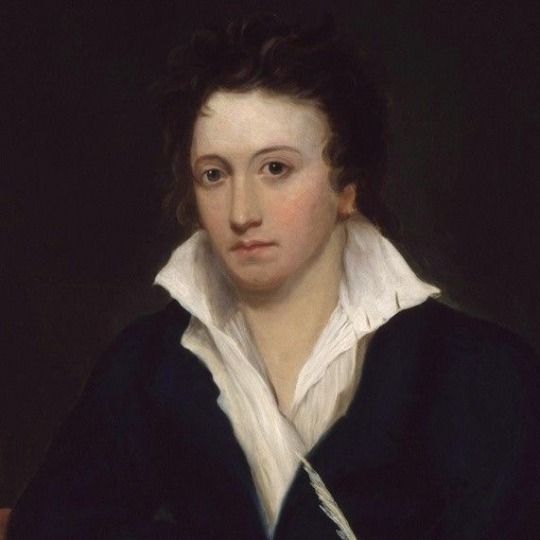

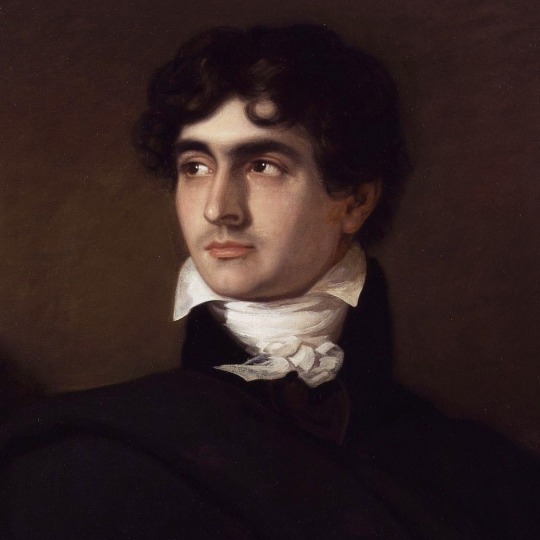
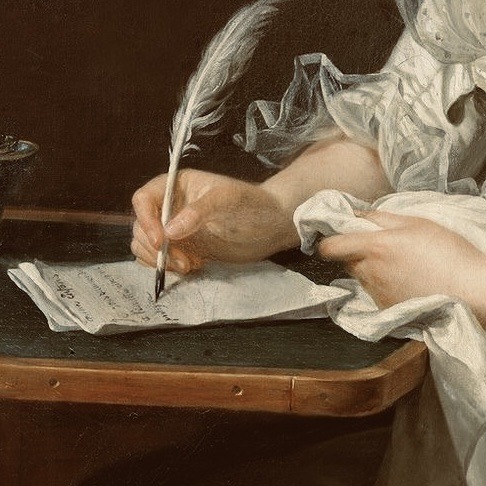

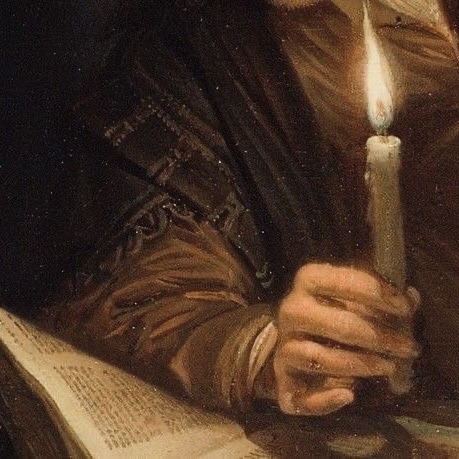

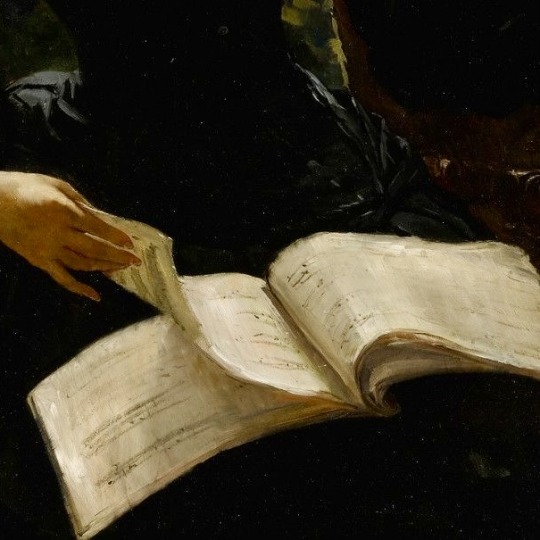
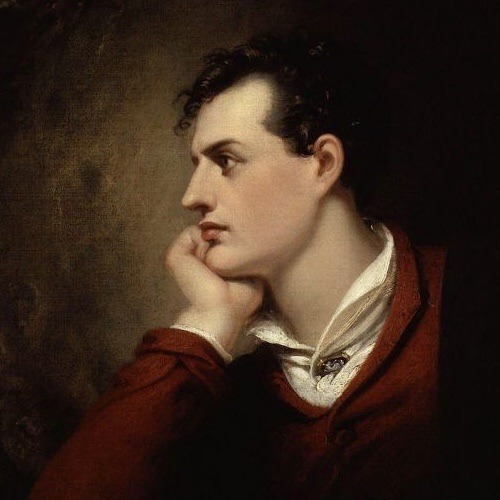
One stormy night on Lake Leman, Lord Byron proposed a little ghastly writing contest...
#they are my roman empire#mary shelley#percy bysshe shelley#percy shelley#lord byron#claire clairmont#john polidori#frankenstein#geneva squad#the vampyre#the romantics#the romantic poets#poetry#literature#english lit#gothic#gothic lit#dark academia#dark academia moodboard#books and literature#book blog#spooky season#ghosts
407 notes
·
View notes
Text
So many have been making Dracula into their hot, seductive, intellectual, Byronic steal yo girl power-fantasy vampire man... when the guy for this job is Lord Ruthven. And it's likely why he was so famous in continental Europe that prolific authors made fanfiction of him.
Him canonically getting away with murder at the end aside, it'd be interesting to see how he may be using some of his mysterious vampiric powers like oathbinding in his lifestyle, during his gambling sessions and parties. He travels a lot, just like Lord Byron, so he's not bound to England either.
52 notes
·
View notes
Text
ohhh to be a 19th century writer in a group with friends and alongside your lover, where you’re all writers.. and you all have a little competition to see who can write the best spooky story…. ~sigh~
#happy frankenstein day#happy birthday mary shelley#frankenstein#victor frankenstein#frankensteins monster#mary shelley#percy shelley#lord byron#john polidori#like where do i sign up?#that’s the dream amiright#me and who?#guardiangabtime#the vampyre#also came from this little challenge#fun fact#i tried to dress frankensteins monster business casual for work today
73 notes
·
View notes
Text











𝐕𝐚𝐦𝐩𝐢𝐫𝐞 𝐒𝐜𝐚𝐫𝐲 𝐒𝐭𝐨𝐫𝐢𝐞𝐬: 𝕿𝖍𝖊 𝖁𝖆𝖒𝖕𝖞𝖗𝖊 ⦃ 📔 ⦄
In the summer of 1816, Lord Byron, Percy Bysshe Shelley, Mary Shelley and John William Polidori (Byron’s personal physician) all vacationed together on Lake Geneva, having a legendary ghost story competition that was the impetus for incredible books such as Shelley’s Frankenstein (1818) and Polidori’s The Vampyre (1819). The Vampyre takes inspiration from Byron's unfinished story, published either as The Fragment or The Burial: A Fragment. In his work, Polidori expands and adds on to the Byronic narrative, creating a masterful, tragic, and entertaining story of the monster and the hunted.
𝕻𝔞𝔦𝔫𝔱𝔦𝔫𝔤𝔰:
⚜ William-Adolphe Bouguereau — Italian woman at the Fountain, 1869 ⚜ William Wallace Gilchrist, Jr. — The Locket, 1911 ⚜ David Roberts — Interior of the Cathedral, Pisa, 1859 ⚜ Eugene Delacroix — The Vampire, 1825
#༺☆༻ 𝕮𝔞𝔫𝔦𝔰 𝕸𝔞𝔧𝔬𝔯 ༺☆༻#halloween#scary stories#vampires#vampire story#gothic#john william polidori#john polidori#the vampyre#lord byron#19th century#19th century literature#literature#web weaving#bookblr
40 notes
·
View notes
Text
This is Lord Byron. And it's all his fault.



He is the reason we have sparkling vampires now:



But also and partially (about 50% lolol) the reason behind Ada Lovelace.


Please feel free to add, correct or reblog if you want♡
Credits to its owners.
#annabourbon#ada lovelace#lord byron#byronic hero#mary shelley#frankenstein the modern prometheus#frankenstein#john polidori#vampyre#john polidori vampire#monsters#lol#gothic#percy shelley#pirates of the caribbean#pirates#corsair#the modern prometheus#modern literature#science fiction#sci fi#fantasy#ghost stories#lake geneva#the haunting of villa diodati#twilight#fun#bvts#vampires#vampire
43 notes
·
View notes
Text
ᯓᡣ𐭩Vampiresᯓᡣ𐭩

(id just like to say i love vampires and grew up in love with g1 draculaura from monster high :3)

For centuries, vampires have fascinated the human mind, appearing in various forms across different cultures and periods. From ancient legends to modern pop culture, these mysterious beings embody themes of immortality, fear, desire, and power.
Origins and Historical Context
The idea of the vampire dates back to ancient civilizations, with early mentions in Mesopotamian, Greek, and Roman mythology. These early "vampiric" figures were often demons or spirits linked to death and the underworld. For example, the Mesopotamian myth of Lilith describes a demoness who preys on infants and seduces men, echoing later vampire tales.
In Slavic folklore, the vampire was a more tangible figure—a reanimated corpse that rose from the grave to drink the blood of the living. These beliefs were often connected to unexplained deaths and diseases, and methods to prevent or eliminate a vampire included staking the body, decapitation, and burial rituals designed to keep the dead at rest. The "upir" in Russia and "vrykolakas" in Greece are examples of these regional variations.
Fear of vampires led to widespread practices aimed at preventing vampirism, such as burying bodies with objects believed to restrain the undead or placing garlic around homes to ward off these nocturnal predators.
However, these legends often arose from a misunderstanding of how bodies decompose. As a corpse’s skin shrinks, its teeth and fingernails can appear to have grown longer. And as internal organs break down, a dark “purge fluid” can leak out of the nose and mouth. People unfamiliar with this process would interpret this fluid to be blood and suspect that the corpse had been drinking it from the living. To which they would rip out hearts of the dead bodies and then feed it to their families.
Literary Vampires: Folklore and Fiction
Vampires entered the literary spotlight with John Polidori's "The Vampyre" in 1819. Inspired by a fragment written by Lord Byron, this short story introduced the aristocratic vampire, a sophisticated and charismatic predator. Polidori's work laid the foundation for later vampire literature, including James Malcolm Rymer's serialized novel "Varney the Vampire" (1845-47), which further established the vampire's place in popular culture.
The quintessential vampire novel, Bram Stoker's "Dracula" (1897), further popularized the vampire archetype. Stoker's Count Dracula, a mysterious and menacing nobleman from Transylvania, became the model for many future depictions. "Dracula" combined elements of Gothic horror, romance, and adventure, captivating readers and securing the vampire's place in literary history. The novel also mirrored Victorian anxieties about sexuality, immigration, and the breakdown of traditional social structures.
Vampires in Modern Culture
The 20th and 21st centuries have seen a surge of vampire-themed media, reflecting society's changing fears and interests. Early film adaptations, such as F.W. Murnau's "Nosferatu" (1922) and Tod Browning's "Dracula" (1931), brought vampires to the big screen, creating lasting images. "Nosferatu," with its depiction of Count Orlok, emphasized the monstrous and terrifying aspects of the vampire, while Bela Lugosi's portrayal of Count Dracula in Browning's film brought a suave and sophisticated allure to the character.
In the latter half of the 20th century, Anne Rice's "The Vampire Chronicles" series redefined the genre, presenting vampires as deeply introspective and morally complex beings. Rice's portrayal emphasized the emotional and existential dilemmas faced by immortals, resonating with modern audiences. Her characters, like Lestat and Louis, grapple with themes of identity, guilt, and the search for meaning in an eternal existence.
The late 20th and early 21st centuries witnessed a rise in vampire popularity, particularly in television and film. Series like "Buffy the Vampire Slayer" and "The Vampire Diaries," along with the "Twilight" saga, reimagined vampires as youthful, attractive figures entangled in romantic and often tragic narratives. These works expanded the vampire mythos, appealing to a broader and younger demographic. "Buffy," for instance, juxtaposed the supernatural with everyday high school struggles, using vampires as metaphors for personal and societal issues.
(id also like to recommend a show im loving atm called what we do in the shadows its so good)
Themes and Symbolism
Vampires serve as versatile symbols in literature and media, embodying various themes and societal anxieties.
Vampires, as undead beings, blur the line between life and death, exploring humanity's fear of mortality and the desire for eternal life. This theme is evident in works like "Interview with the Vampire," where characters wrestle with the implications of living forever.
Vampires often represent the outsider, reflecting societal fears of the unknown and the marginalised. The vampire's need to hide their true nature parallels the experience of those who feel alienated or persecuted in society.
The act of vampirism, often depicted as a form of seduction, symbolises taboo desires and the complexities of human sexuality. This is evident in the sensual imagery associated with vampire bites and the intimate connection between predator and prey.
Vampires, with their supernatural abilities, frequently serve as metaphors for power, control, and the corrupting influence of absolute power. Dracula's control over his victims and his manipulation of others reflect the dangers of unchecked authority.
Vampires remain a potent and adaptable myth, continually evolving to reflect contemporary cultural and psychological landscapes. Whether as monstrous villains or tragic anti-heroes, vampires captivate audiences by embodying timeless human fears and desires. Their enduring appeal lies in their ability to mirror our deepest anxieties while offering a glimpse into the tantalizing possibility of life beyond death. The vampire's journey from ancient myth to modern icon underscores their significance in our collective imagination, ensuring that they will continue to haunt our stories and dreams for generations to come.

#history#dark aesthetic#dark academia#goth#goth aesthetic#gothcore#gothic aesthetic#vampire aesthetic#interview with the vampire#buffy the vampire slayer#the vampire diaries#the vampire chronicles#vampcore#vampires#dracula#bram stoker#twilight#anne rice#nosferatu#tod browning#bella lugosi#the vampyre#john polidori#literature#gothic#gothic literature#varney the vampire#draculuara
31 notes
·
View notes
Text


The Substack! It lives!
Please do get an eyeful of the whole thing, but for those who want to cut straight to one of the newer goodies, this is the link to the new preview chapter of Harker.
Minor note: For some reason the order of posts got a bit screwy. The chapters for specific stories are all still clustered together but a bit mixed around. I think it has something to do with me fussing with edits and the Substack publishing in order of what was tinkered with last, but oh well. I'll do better with future posts that aren't dropped in a bulk pile.
Hope you enjoy the early Halloween treat!
#honestly not nearly the worst thing I was afraid of during Panic Mode#I can't figure out how to re-order posts (if that's even a thing Substack's format allows)#but at least it's a snafu I can deal with in the future with a less massive heap of uploads#anyway time for a mountain of tags#substack#my writing#my art#Harker#The Vampyres#Penclosa#Was Frankenstein Not the Monster?#dracula daily#jonathan harker#mina harker#dracula#frankenstein#victor frankenstein#the creature#arthur machen#the parasite#helen penclosa#arthur conan doyle#mary shelley#bram stoker#the vampyre#john william polidori#john barrington cowles#kate northcott#count magnus#c.r. kane
184 notes
·
View notes
Text

Ah, dear reader, let me regale you with a tale from the annals of literary history, steeped in mystery and enshrouded in the ominous mists of 1816—a year oft referred to as the "Year Without a Summer." This macabre moniker arose from the cataclysmic eruption of Mount Tambora in distant Indonesia, a volcanic fury so immense it cast a pall over Europe and North America, plunging the world into a chilling gloom.
Now, picture, if you will, the illustrious Mary Shelley (#Bi2), her brooding paramour Percy Bysshe Shelley, and her enigmatic stepsister Claire Clairmont, taking refuge in the stately Villa Diodati near Lake Geneva. They were joined by none other than the illustrious and scandalous Lord Byron (#OneOfUs) and his enigmatic physician, the somber John Polidori.
The heavens wept incessantly, and the relentless rain imprisoned our intrepid creatives indoors. To stave off the encroaching ennui, they turned to the dark allure of German ghost stories. It was during one such eerie evening, under the pallid light of flickering candles, that the diabolical Lord Byron proposed a challenge most fiendish: each guest was to pen their own tale of the supernatural.
Inspired by the electrifying discussions of galvanism and the reanimation of lifeless flesh, our dear Mary Shelley found herself birthing an idea so monstrous it would rattle the very bones of literary tradition. Thus, "Frankenstein; or, The Modern Prometheus" began to claw its way into existence, a tale of creation and despair that would haunt the corridors of time.
Meanwhile, the enigmatic Polidori, not to be outdone, conjured "The Vampyre," a work that would cast a long, sanguine shadow over the burgeoning vampire genre.
Ah, that fateful summer, with its cursed weather and the alchemical blend of minds at Villa Diodati, became a crucible of dark creativity, giving rise to masterpieces that would forever alter the landscape of Gothic literature and beyond. #HotBiSummer 💀
Mary Shelley, the teenage inventor of modern science-fiction and part of Lord Byron's road-tripping disaster bisexual crew, has often fallen victim to the "gal pals" effect, which overlooks her romances with women.
Lord Byron is regarded as one of the greatest English poets, one who was immensely popular during his time and remains influential today.
Polidori created the Romantic literary vampire by basing him on Byron himself. Polidori’s vampire is exactly the destructive bi stereotype we’re tired of — though in Polidori’s defense, he was trapped with the living embodiment of it at the time.
#lgbt#queer#bisexuality#bi#lgbtq#lgbtqia#bi pride#bi visibility#bivisibility#representationmatters#queer history#lgbt history#vampire lore#classic literature#literature#frankenstein#mary shelley#goth#gothic#goth girl#romantic goth#gothcore#gothgoth#lord byron#vampires#john polidori#vampyr#gothic horror#vampire girl#goth gf
23 notes
·
View notes
Text
My contribution to the "If you liked Nosferatu 2024, go see" suggestions - If you liked Nosferatu 2024, go see Gothic (1986) by Ken Russell.
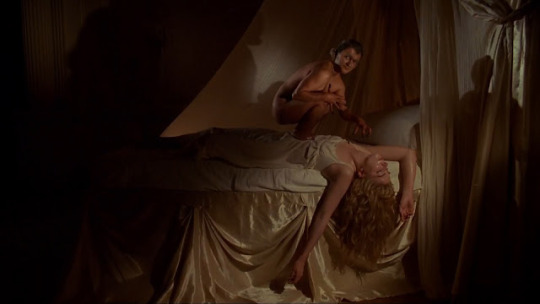
1816, Villa Diodati in lake Geneva, Switzerland. Lord Byron, his doctor John Polidori and their unexpected guests, the Shelleys and their relative Claire Clairmont, get ready for an appropriately Romantic evening's entertainment of crafting scary stories, getting high on laudanum and having orgies. Psychosexual shenanigans and ample literary references ensue.
Starring Gabriel Byrne, Timothy Spall, Julian Sands, Natasha Richardson and Myriam Cyr.
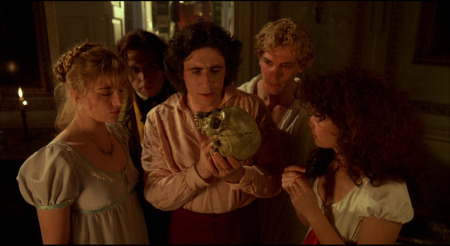

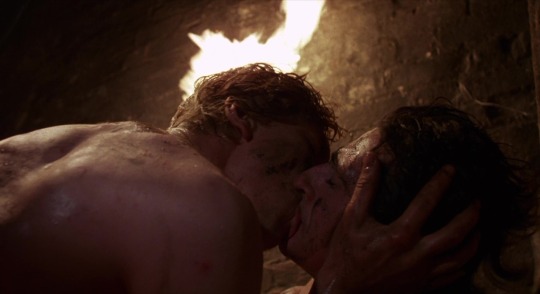
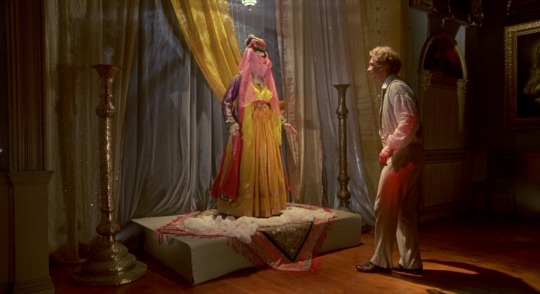
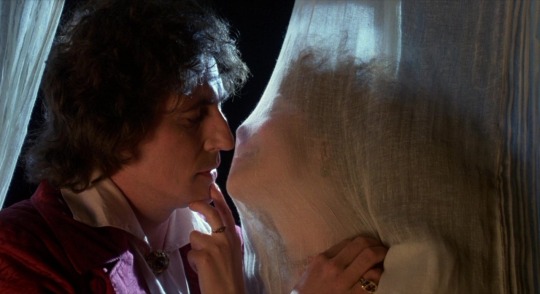

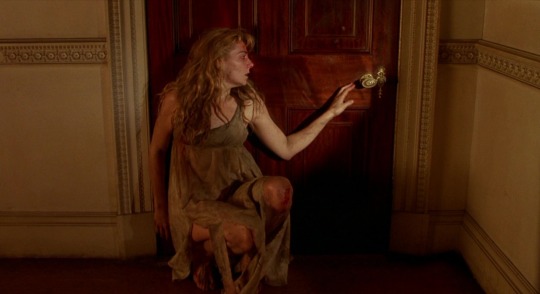
You still here? RUN TO WATCH IT LIKE THE DEVILS OF HELL ARE AFTER YOUR CURSED SOUL
#gothic#ken russell#gothic 1986#lord byron#mary shelley#percy bysshe shelley#john polidori#the vampyre#frankenstein#gothic horror#gothic romance#horror#romance#cinema#nosferatu#nosferatu 2024#robert eggers#natasha richardson#gabriel byrne#julian sands#timothy spall#psychosexual
18 notes
·
View notes